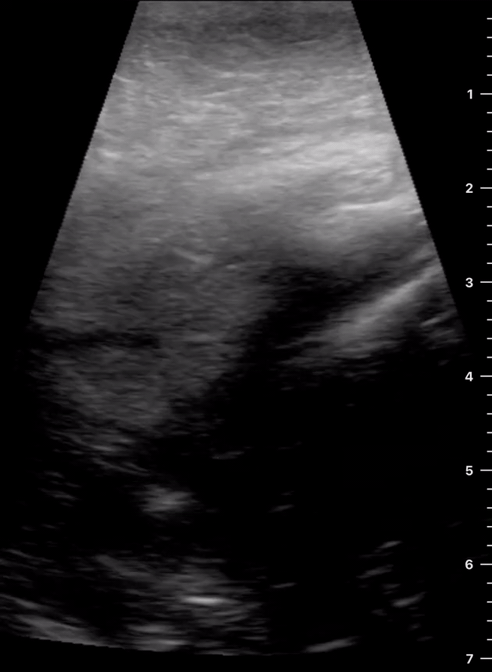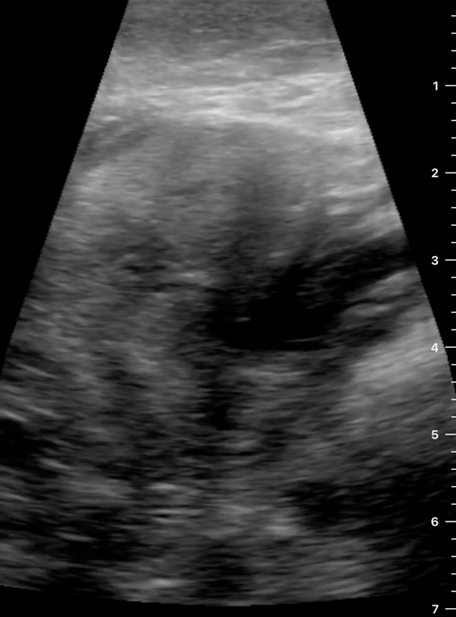Not your classic blunt neck trauma
12 hours after having a fall in her bathroom and hitting her jaw against the bathtub edge, an otherwise healthy 54 y/o female presented to the ED complaining of neck pain, dysphonia and difficulty in swallowing. Physical examination revealed hypertension, an HR of 109 bpm (sinus tachycardia) and an O2Sat of 98% on air. She had no trouble breathing or speaking, although a coarse tone of voice was evident. Her skin revealed a mild linear abrasion with local upper right lateral neck swelling. A firm, tender right submandibular mass was palpable.
Scan it
〰️
Scan it 〰️
Trachea, and the pulsatile carotid arteries with no obvious signs of injury.
Sliding the probe to the right submandibular region revealed a well defined isoechoic structure compatible with an enlarged submandibulary gland
colour doppler shows an absence of flow in the deeper anechoic level and apparent indemnity in the glands vasculature.
A closer look to the right submandibular gland reveals a deep end with heterogeneous borders. There is also significant edema and free fluid invading deeper structures.
After the initial assessment, the patient remained hypertensive and tachycardic. Although there was no obvious worsening of the airway condition and no respiratory symptoms, the patient was referred to the regional centre for angio CT of the neck.
This modality confirmed a right submandibular gland fragmentation with significant adjacent oedema extending to the airway. There was airway midline deviation to the left and notable calibre reduction at the level of the hypopharynx. The patient was admitted for observation and progressed well with conservative management. She did not require Airway Intervention.






